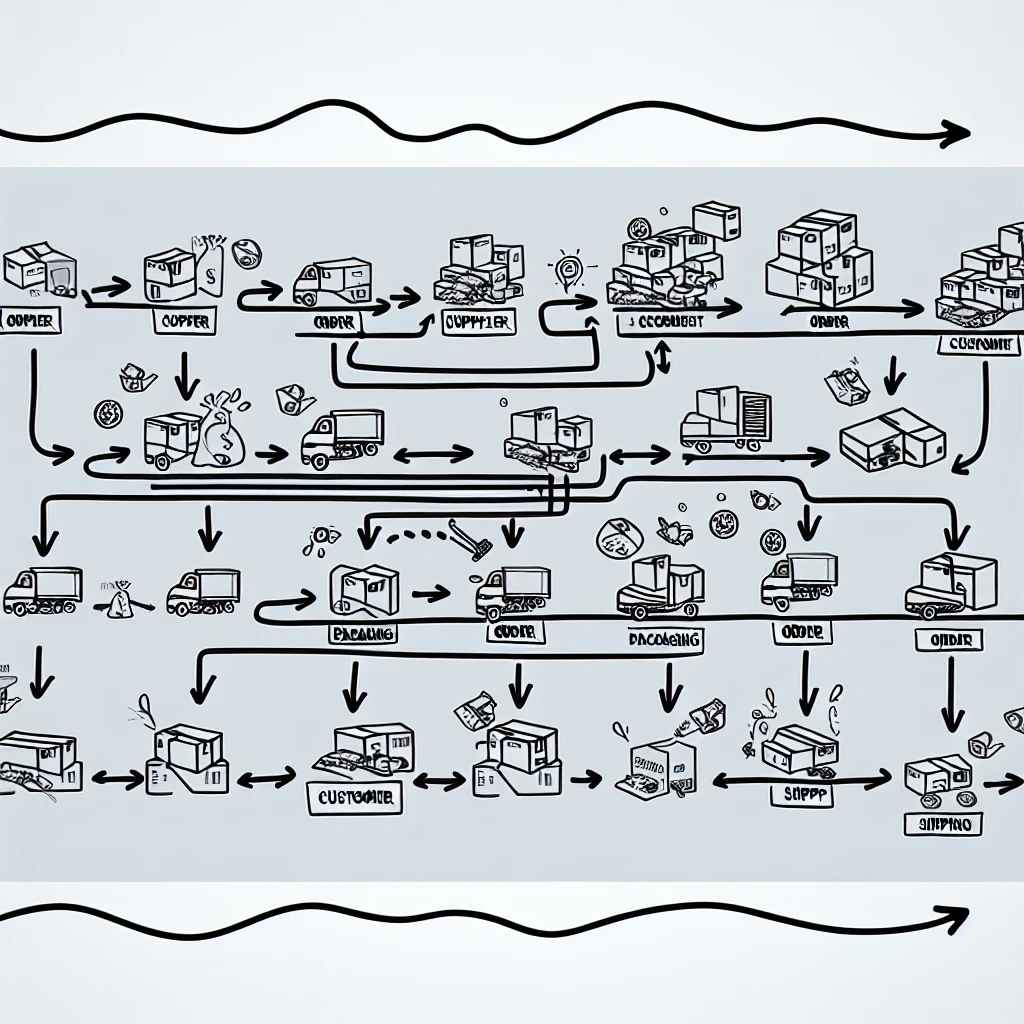The Multi-Channel Inventory Challenge
Managing inventory across various ecommerce platforms presents a labyrinth of complexity that can make even the most seasoned merchants' heads spin. The crux of the challenge lies in the sheer diversity of channels that a business might operate on — from marketplaces like Amazon and eBay to social shopping on Instagram and Facebook, not to mention their own branded websites. Each platform has its unique audience, selling points, and, most critically, inventory management systems.
Imagine the Herculean task of keeping track of stock levels across all these channels. A product sold on one platform needs to be immediately accounted for across the others to prevent overselling, which can lead to negative reviews and a tarnished reputation. The situation becomes even more daunting when you consider variations in products, such as size, color, and style, which exponentially increases the inventory permutations to be managed.
Moreover, the velocity of sales can vary greatly from one channel to another. A flash sale on one site can deplete stock that was allocated for another, causing a ripple effect of stock shortages and customer dissatisfaction. This balancing act requires not only meticulous attention to detail but also a strategic approach to inventory allocation and real-time data synchronization.
Without a sophisticated inventory management system, businesses run the risk of encountering the dreaded 'stockouts' or 'overstocks' — both of which can be costly. Stockouts lead to lost sales and potentially lost customers, while overstocks tie up capital that could be used to grow other parts of the business. It's a delicate dance of supply and demand, one that requires both insight and agility to execute effectively.
The multi-channel inventory challenge is not just about numbers and data; it's about providing a seamless customer experience. Consumers expect the same level of service and product availability regardless of where they shop. This means that inventory management is not just a backend concern; it's a critical component of customer satisfaction and brand loyalty. In the next sections, we'll delve into how businesses can synchronize inventory across platforms and leverage technology to achieve omnichannel success, ensuring that they meet customer expectations and maximize their sales potential.
Synchronizing Inventory Across Platforms
When it comes to synchronizing inventory across multiple sales channels, the key is to implement systems that communicate with each other in real-time. This means that the moment a product is sold on one platform, the inventory levels on all other platforms are automatically updated. This real-time updating is crucial for maintaining accurate stock levels and avoiding the pitfalls of overselling or underselling.
One effective method for achieving this synchronization is to use centralized inventory management software. These platforms act as a single source of truth for all your inventory data, updating in real-time as sales occur across different channels. They can also help you forecast demand, manage reordering, and even automate some of the more tedious aspects of inventory management.
Another approach is to integrate your various sales channels with an enterprise resource planning (ERP) system. ERPs are designed to handle complex business processes and can be customized to manage inventory across multiple channels. They're particularly useful for larger businesses that need robust solutions to manage their operations.
However, technology alone isn't enough. You also need to have clear processes in place for managing inventory. This includes setting par levels for each product, establishing reorder points, and having a clear understanding of lead times from suppliers. It's about creating a system that not only leverages technology but also incorporates sound inventory management principles.
Ultimately, the goal is to create a seamless experience for the customer. They shouldn't have to worry about whether an item is in stock on one platform versus another. By synchronizing your inventory across all sales channels, you ensure that customers have a consistent experience no matter where they shop, which is essential for building trust and loyalty in today's competitive ecommerce landscape.
Leveraging Technology for Omnichannel Success
In the quest for omnichannel dominance, technology isn't just a tool; it's the linchpin that holds the entire operation together. As we delve deeper into the world of multi-channel ecommerce, it's clear that traditional inventory management techniques are no longer sufficient. The digital age demands digital solutions, and that's where cutting-edge technology comes into play.
Imagine a system so intuitive that it not only tracks your inventory across various platforms but also predicts your stock needs based on customer behavior and sales trends. This isn't a pipe dream; it's the reality of advanced inventory management systems that utilize machine learning and AI to keep you one step ahead. These systems don't just react; they anticipate, ensuring that you're never caught off guard by a sudden surge in demand or a shift in the market.
Moreover, cloud-based inventory solutions offer unparalleled flexibility and scalability. Whether you're selling on two channels or twenty, these systems can adapt to your business's growing needs. They provide real-time insights and analytics, allowing you to make data-driven decisions that can streamline your operations and boost your bottom line.
But let's not forget about the integration capabilities. Today's top-tier inventory management tools can seamlessly connect with your ecommerce platforms, marketplaces, and even brick-and-mortar POS systems. This creates a cohesive network where information flows freely, eliminating the silos that can often hinder business growth.
And in the spirit of true omnichannel success, these technologies extend beyond mere inventory tracking. They encompass customer relationship management (CRM) systems, which provide a 360-degree view of your customers' interactions across all channels. This holistic approach not only improves inventory management but also enhances the overall customer experience, fostering loyalty and encouraging repeat business.
In conclusion, leveraging technology for omnichannel success isn't just about keeping up with the competition; it's about setting the pace. By embracing the technological solutions available today, you can transform your multi-channel ecommerce inventory from a potential headache into a strategic advantage. It's a bold step towards not just meeting but exceeding customer expectations, and in the ecommerce arena, that's the ultimate win.







